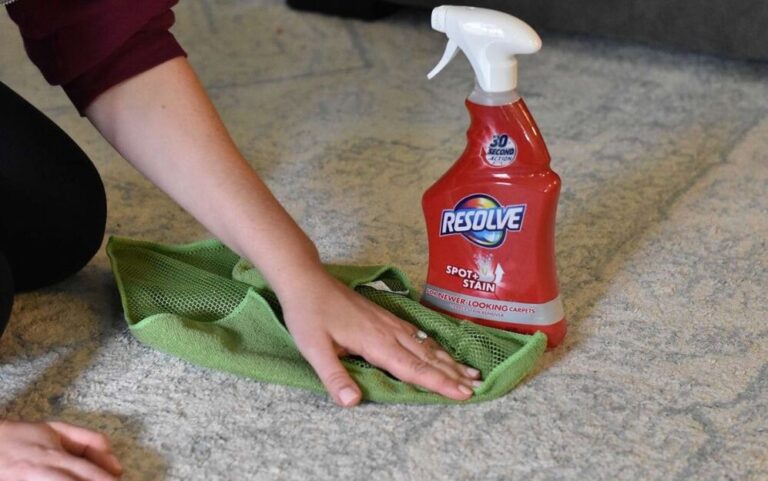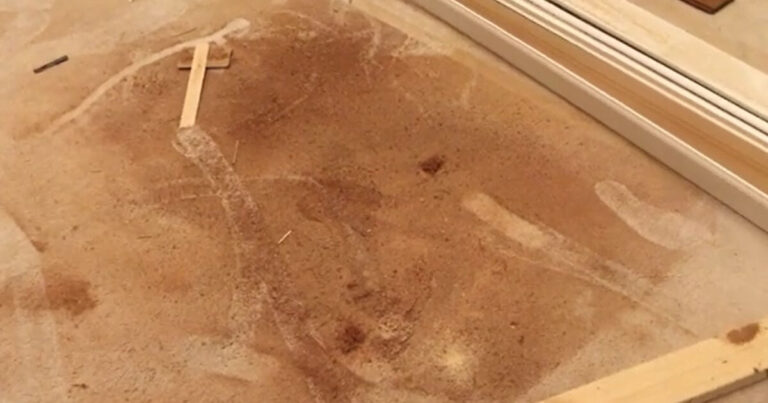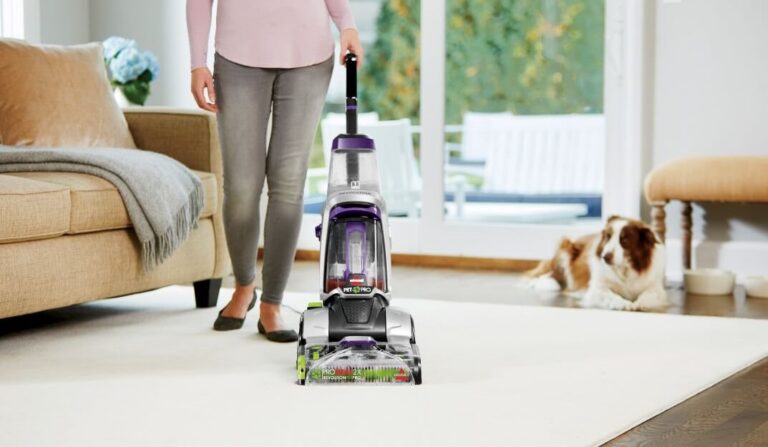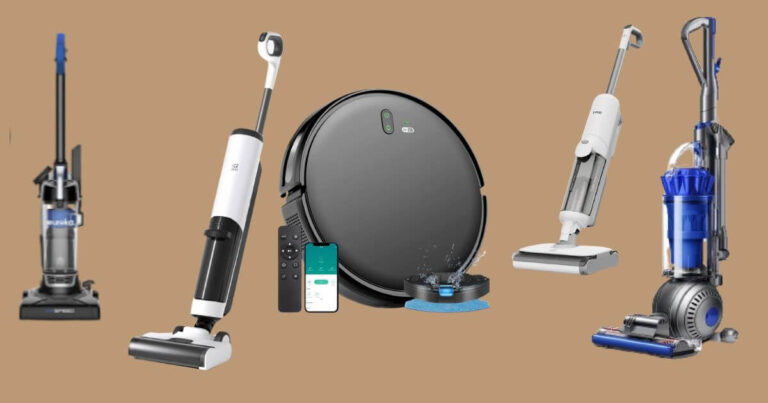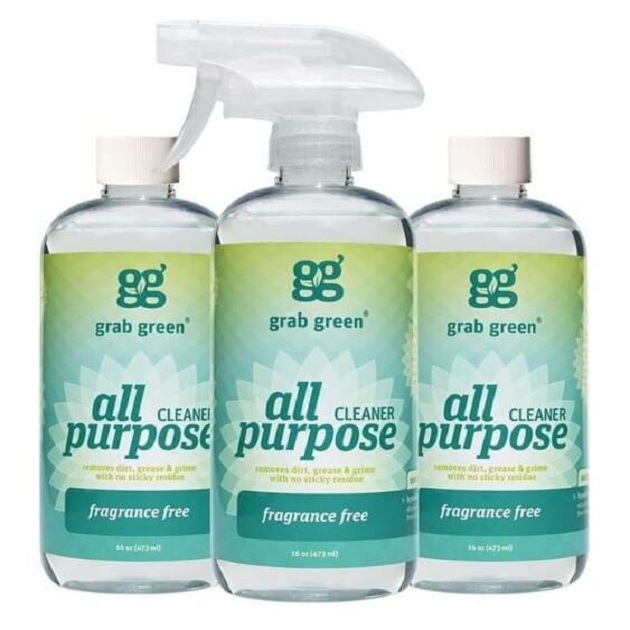A vacuum cleaner is a common household appliance used for cleaning purposes. Many people use it to remove dirt, dust, and debris from their homes. But have you ever wondered if a vacuum cleaner actually creates a vacuum, like the name suggests? In this article, we will explore how a vacuum cleaner works and whether it creates a true vacuum or not.
How does a vacuum cleaner work?

Before we dive into the question of whether a vacuum cleaner creates an actual vacuum or not, let’s first understand how a vacuum cleaner works. A vacuum cleaner is designed to create suction, which helps in pulling dirt and dust into the machine for cleaning purposes. The main components of a vacuum cleaner include a motor, a fan, a filtering system, and various attachments.
What is the role of a vacuum cleaner?
The primary role of a vacuum cleaner is to remove dirt, dust, and debris from various surfaces. It is especially useful for cleaning carpets, as the suction power of the vacuum cleaner helps in pulling out embedded dirt and dust particles. However, a vacuum cleaner can also be used on other surfaces like hardwood floors, tiles, upholstery, curtains, and even car interiors.
How does the suction process work?
The suction process in a vacuum cleaner starts with the motor, which generates the necessary air flow. When you turn on the vacuum cleaner, the motor spins the fan rapidly, creating a difference in air pressure inside and outside the vacuum cleaner. This pressure difference causes air to rush into the vacuum cleaner through the intake port, bringing along with it any loose dirt or debris present on the surface being cleaned.
What are the components inside a vacuum cleaner?
Inside a vacuum cleaner, you will find a dust bag or a dust container, which collects the dirt and debris that is sucked in. The filtering system inside the vacuum cleaner traps small particles and prevents them from going back into the air. The vacuum cleaner may also have different attachments, such as a crevice tool, a brush, or a hose, which can be used for specific cleaning tasks.
What are the different types of vacuum cleaners?
Now that we know how a vacuum cleaner works, let’s explore the different types of vacuum cleaners available in the market:
What is a cyclone vacuum cleaner?
A cyclone vacuum cleaner uses a cyclonic separation technology to separate dust and dirt from the air. It creates a swirling air flow, which forces the particles to move towards the outer edge of the vacuum cleaner’s dust container. This type of vacuum cleaner is known for its powerful suction and efficient cleaning performance.
How does a robotic vacuum cleaner work?

A robotic vacuum cleaner, also known as a robot vacuum, is an autonomous cleaning machine. It uses sensors and advanced algorithms to navigate through your home and clean the floors automatically. Robot vacuums are designed to handle everyday cleaning tasks and can be programmed to clean at specific times or in specific areas of your home.
What is a central vacuum system?
A central vacuum system is a built-in cleaning solution for your home. It consists of a central unit, usually located in the basement or garage, and a network of pipes that run through the walls of your home. You can connect a hose to various outlets placed around the house to clean the different areas. The central unit collects the dirt and debris, which can be emptied later.
What was the first vacuum cleaner invented?
The first vacuum cleaner was invented in the late 19th century and has come a long way since then. Let’s take a closer look at its history:
Who invented the first vacuum cleaner?
The first vacuum cleaner was invented by Hubert Cecil Booth, an English engineer. Booth was inspired to create a machine that could remove dust and debris from public spaces, such as theaters and hotels.
When was the first vacuum cleaner invented?
The first vacuum cleaner was invented in 1901. Booth’s invention was known as the “Puffing Billy” and used a large horse-drawn motorized unit to create suction and collect dust.
What were the features of the first vacuum cleaner?
The first vacuum cleaner was quite different from the ones we use today. It was a huge machine that required a team of people to operate it. The “Puffing Billy” used a system of hoses and pipes to create suction, and the collected dirt and debris were stored in large containers.
How can you improve vacuum cleaning in your household?
To ensure effective vacuum cleaning in your household, here are some tips:
What are some effective vacuum cleaning techniques?
When vacuuming, make sure to move the vacuum cleaner in slow, overlapping strokes to ensure thorough cleaning. Pay extra attention to high-traffic areas and areas prone to accumulating dust, such as corners and edges.
What are the best vacuum cleaner models available in the market?
There are several high-quality vacuum cleaner models available in the market. Consider factors like suction power, filtration system, attachments, and user reviews when choosing a vacuum cleaner that suits your needs.
What are some common mistakes to avoid while vacuum cleaning?
Some common mistakes to avoid while vacuum cleaning include using the wrong attachments, not emptying the dust bag or container regularly, not cleaning or replacing the filters as needed, and not properly maintaining the vacuum cleaner to prolong its lifespan.
Does a vacuum cleaner only clean carpets?
No, a vacuum cleaner can be used on various surfaces apart from carpets. Depending on the attachment or setting used, a vacuum cleaner can effectively clean hardwood floors, tiles, upholstery, curtains, and even car interiors.
What attachments can be used to clean different surfaces?
To clean different surfaces, a vacuum cleaner can be equipped with various attachments. For example, a crevice tool can be used to clean narrow gaps and corners, a brush attachment can help remove dust from upholstery, and a floor brush attachment can be used on hard floors.
How can a vacuum cleaner effectively clean upholstery and curtains?
To clean upholstery and curtains, use a fabric attachment or a brush attachment on your vacuum cleaner. Gently move the attachment over the surface, making sure to cover all areas. This will help remove dust and dirt without causing any damage.
How does the airflow and pressure inside a vacuum cleaner work?
The airflow and pressure play crucial roles in the functioning of a vacuum cleaner. Let’s explore how they work:
How does the exhaust port release air?
The exhaust port in a vacuum cleaner is responsible for releasing the air that has been sucked in. It allows the air to exit the vacuum cleaner, while retaining the dirt and debris inside the dust container or bag.
What is the function of the intake port in a vacuum cleaner?
The intake port in a vacuum cleaner is where the suction process begins. It is the opening through which air, along with dirt and debris, enters the vacuum cleaner.
How does the canister maintain the pressure inside?

The canister or dust container in a vacuum cleaner is an essential part of maintaining the pressure inside. It prevents the air from escaping, allowing the vacuum cleaner to create and maintain the necessary pressure for effective suction.
In conclusion, while a vacuum cleaner does not create an actual vacuum in the traditional sense, it does create a partial vacuum that enables it to suck up dirt and debris from various surfaces. The suction process, along with the proper airflow and pressure, ensures effective cleaning.
With the advancements in technology, we now have various types of vacuum cleaners available in the market to cater to different cleaning needs. So, the next time you use a vacuum cleaner in your home, you can appreciate the science behind its cleaning power.
FAQs (Frequently Asked Questions)
Does a vacuum cleaner create an actual vacuum?
No, a vacuum cleaner does not create an actual vacuum in the sense of completely removing all air or creating a true empty space. The term “vacuum” in the context of a vacuum cleaner refers to the suction mechanism used to pick up dirt and debris.
What is a cyclone vacuum cleaner?
A cyclone vacuum cleaner is a type of vacuum cleaner that uses a cyclonic separation method to filter and collect dirt and dust. It relies on centrifugal force to separate the dirt particles from the airflow, allowing the cleaner air to be released back into the room.
How does a robotic vacuum cleaner work?
A robotic vacuum cleaner, also known as a robotic vacuum or robovac, operates autonomously to clean floors. It uses various sensors and algorithms to navigate around obstacles and avoid falling off stairs. The robotic vacuum cleaner typically follows a pre-programmed cleaning pattern or can be controlled through a smartphone app.
What is a central vacuum system?
A central vacuum system is a built-in system that is installed in a house or building. It consists of a central unit typically located in a utility room or garage, with a network of tubes running throughout the walls and floors. Inlets are strategically placed in different rooms, allowing homeowners to connect a hose and clean the entire house easily.
What are the different vacuum cleaner models available?
There are several types of vacuum cleaner models available, including upright vacuums, canister vacuums, robotic vacuums, stick vacuums, handheld vacuums, and central vacuum systems. Each model has its own advantages and features, catering to different cleaning needs and preferences.
How does a vacuum cleaner’s cleaning mechanism work?
A vacuum cleaner’s cleaning mechanism involves creating suction to draw in dirt and debris. As the vacuum cleaner is moved over a surface, the nozzle suctions air and anything present on the surface into the cleaner. The dirt and debris are then collected in a vacuum bag or other dirt collection container.
What is the pressure inside a vacuum cleaner?
The pressure inside a vacuum cleaner is lower than the atmospheric pressure. This pressure drop inside the cleaner creates a flow of air from the surrounding environment, allowing the cleaner to suck in dirt and debris.
Can I look inside a vacuum cleaner while it is running?
No, it is not safe to look inside a vacuum cleaner while it is running. The high-speed stream of air and moving parts inside the vacuum can pose a risk of injury. It is best to turn off the vacuum cleaner and unplug it before inspecting or performing any maintenance.
How does an electric vacuum cleaner work?
An electric vacuum cleaner typically has an electric motor that powers a fan or impeller. The motor creates a suction force, which draws air and dirt into the cleaner. The dirt and dust particles are then trapped in a vacuum bag or filter, while the cleaner air is released back into the environment.
How does a vacuum cleaner create suction to work?
A vacuum cleaner creates suction to work by creating a pressure drop inside the cleaner. When the cleaner is turned on, the airflow created by the motor and fan creates a low-pressure area inside the cleaner. This low pressure allows the cleaner to suck in dirt and debris from the surrounding environment.
In conclusion,
a vacuum cleaner does not create an actual vacuum in the true sense of the term. While it is designed to create low-pressure areas that suck in air and debris, it does not achieve a true vacuum where all particles and air molecules are completely removed. The term “vacuum” in the context of a vacuum cleaner is used to describe the suction power and action of pulling in particles and debris, rather than implying the creation of a perfect vacuum.

